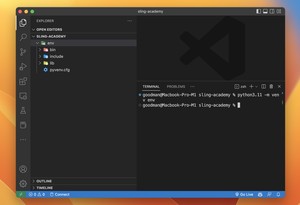Overview
The Python requests module does not natively support asynchronous operations. However, there are ways to implement async functionality using this module or to consider alternative libraries designed for async operations, such as aiohttp.
Introduction to Python Requests
The requests library in Python is known for its simplicity and ease of use for making synchronous HTTP requests. It is a blocking library, which means during a request, your Python program will not execute any further until a response is received. This could be inefficient for I/O bound and high latency operations that could be run concurrently.
import requests
response = requests.get('https://example.com')
print(response.text)
Making async HTTP requests
To handle asynchronous requests in Python, one must use async frameworks or libraries. While the requests library doesn’t support asynchronous requests out of the box, there are other libraries like httpx and aiohttp that do.
Using httpx for Async Requests
The httpx library is a fully featured HTTP client for Python 3, which provides async capabilities and is considered a sort of spiritual successor to requests.
import httpx
async def get_data():
async with httpx.AsyncClient() as client:
response = await client.get('https://example.com')
return response
coroutine = get_data()
Using aiohttp for Async Requests
aiohttp is another popular library for making asynchronous HTTP requests, and it integrates well with the Python asyncio ecosystem.
import aiohttp
import asyncio
async def get_data():
async with aiohttp.ClientSession() as session:
async with session.get('https://example.com') as response:
return await response.text()
asyncio.run(get_data())
Async and Requests: Deep Dive
While you can’t use async/await with requests, you could create a workaround by using threading or multiprocessing to simulate asynchronous behaviour.
from concurrent.futures import ThreadPoolExecutor
import requests
def fetch(url):
return requests.get(url).text
with ThreadPoolExecutor() as executor:
future = executor.submit(fetch, 'https://example.com')
response_data = future.result()
print(response_data)
Creating an Async Wrapper for Requests
You can technically create an async wrapper around the requests library using threads; however, this is not a recommended practice since it combines asynchronous code with an inherently synchronous library.
Advanced Asynchronous Patterns
If your application requires the sophistication of concurrency, using libraries that natively support async I/O is recommended. Advanced patterns include the use of producer-consumer queues, web scraping with concurrency, and real-time data processing.
Handling Exceptions and Timeouts
When dealing with asynchronous code, one needs to be mindful of exceptions and timeouts, handling them appropriately within async contexts.
import aiohttp
import asyncio
async def get_data():
try:
async with aiohttp.ClientSession() as session:
async with session.get('https://example.com', timeout=10) as response:
data = await response.text()
return data
except asyncio.TimeoutError:
print('The request timed out')
except aiohttp.ClientError as e:
print(f'A client error occurred: {e}')
Conclusion
While the requests library itself does not support async/await, Python developers can either use alternative async-compatible libraries or employ workarounds like threading. For most asynchronous use cases, it is best to look at libraries like httpx and aiohttp which are built to handle asynchronous operations natively and efficiently.











